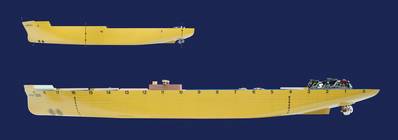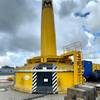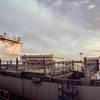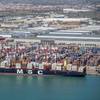Wave Added Resistance
MARIN Unravels Secrets of Wave Added Resistance
Model tests for the evaluation of ship designs should not only be performed in calm water but also in waves. MARIN’s new Depressurized Wave Basin (DWB) helps unravel some of the mysteries of wave added resistance.
A ship is usually designed with a focus on its performance in calm water. However, operational conditions should be taken into account, including added resistance due to waves because it is an important factor in the economical performance of a ship.
The sustained speed in storm conditions should be investigated but also the power increase in typical service conditions. And with the trend for an increasing ship size, the latter becomes even more important. In addition, upcoming regulations such as EEDI require a very careful correction for the added resistance during speed trials.
Using large ship models in a 240x18x8 m towing tank can make the difference when trying to understand the secrets of wave added resistance. In the DWB a large ship model of a Very Large Container Ship of about 350 m for instance, can be tested at a model scale ratio of 1 to 30.
In our Seakeeping and Maneuvering Basin (SMB) the scale ratio typically doubles, which means that a 1.5 m wave for the ship would require a 2.5 cm wave in the SMB and a 5 cm wave in the DWB. This increase, in combination with increased measurement accuracy, improves the prediction of wave added resistance in typical service conditions.
A further benefit of the DWB is that only one large ship model is used to perform calm water resistance and propulsion tests, cavitation observations, hull pressure measurements and wave added resistance tests for mild to severe weather conditions. When well prepared, all the tests can be conducted within one week. A ship model can be chosen with large propeller models with a diameter of about 300mm, reducing significant scale effects on propeller blade cavitation and propeller thrust and torque. This provides a high level of accuracy when measuring for instance the wave added resistance. In this way MARIN expects to unveil some of the secrets of wave added resistance.
The Author
Patrick Hooijmans is project manager at the Ships department of MARIN, the Maritime Research Institute Netherlands. MARIN offers simulation, model testing, full-scale measurements and training programs, to the shipbuilding and offshore industry and governments.
Email: [email protected]
(As published in the August 2012 edition of Maritime Reporter - www.marinelink.com)











